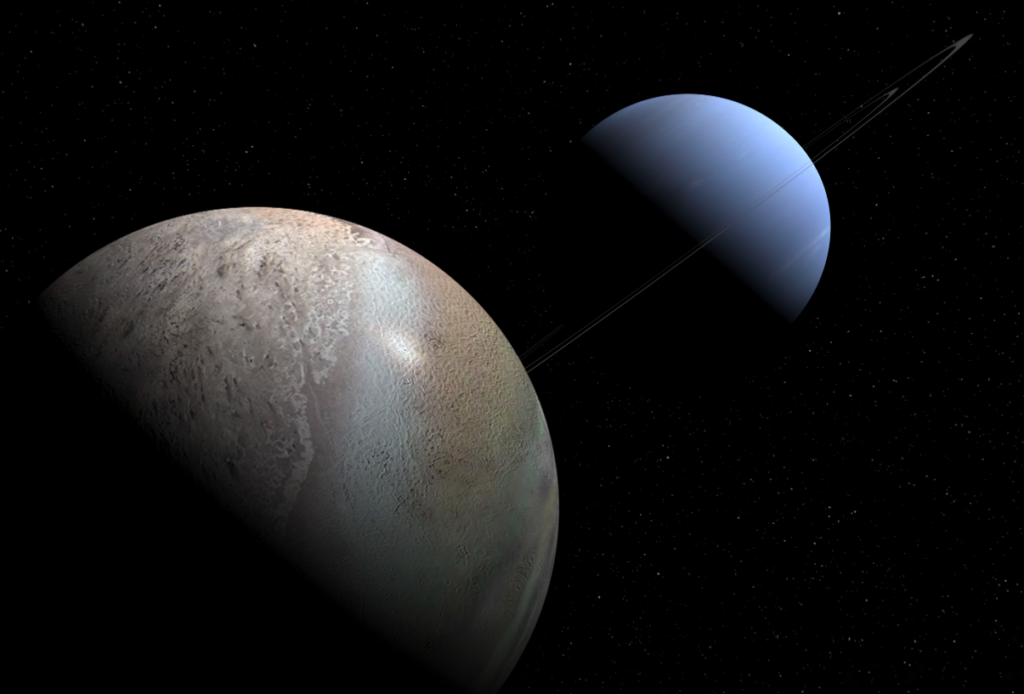In an exciting development for planetary science, astronomers have recently announced the discovery of three new moons orbiting the ice giants Neptune and Uranus. These distant celestial bodies were spotted using powerful land-based telescopes in Hawaii and Chile.
Uranus’ New Moon: S/2023 U1
The first of these newly detected moons revolves around Uranus. It is the smallest moon discovered around this ice giant in over two decades. Measuring a mere 5 miles (8 kilometers) wide, this tiny moon takes 680 days to complete one orbit around Uranus. To put its size in perspective, it’s even smaller than Mars’ moon Deimos, which is considered one of the tiniest known moons in our solar system.
Currently referred to as “S/2023 U1,” this moon awaits a permanent name inspired by a Shakespearean character. Its discovery marks a significant milestone in our exploration of Uranus, shedding light on the dynamics of its moon system.
Neptune’s New Moons: S/2002 N5 and S/2021 N1
Neptune, the blue-green giant, has also revealed two new moons. The brighter of the pair is provisionally named “S/2002 N5” and measures 14 miles (23 kilometers) wide. It orbits Neptune in a 9-year cycle, adding to the planet’s existing moon family.
The fainter moon, currently assigned the name “S/2021 N1,” has a width of 8.6 miles (14 kilometers) and completes its orbit around Neptune once every 27 years. Both of Neptune’s new moons will eventually receive permanent names inspired by sea gods and nymphs from Greek mythology.
A Remarkable Discovery
The International Astronomical Union’s Minor Planet Center, responsible for designating planets, comets, and moons in our solar system, officially announced these findings. The discovery was made through collaborative efforts using observatories in Hawaii and Chile.
According to Scott Sheppard, a staff scientist at Carnegie Science and one of the lead researchers, these new moons are “the faintest ever found around these two ice giant planets using ground-based telescopes.” Special image processing techniques were crucial in revealing these faint objects.
Sheppard first detected Uranus’ new moon in November of last year using Chile’s Magellan telescopes. Follow-up observations, combined with predictions from NASA’s Jet Propulsion Laboratory (JPL), confirmed the moon’s existence.







































